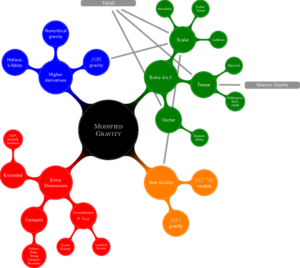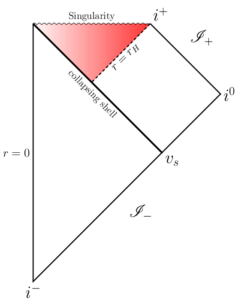Research
My research focuses on different aspects of cosmology and gravitation. For a comprehensive list of my publications, please refer to my profile on INSPIRE-HEP.

Modified gravity
General Relativity stands as the most robust theory of gravity to date. However, let’s entertain the idea that deviations from this theory occur on large scales, possibly produced by a brane model in higher dimensions or the existence of a massive graviton. It’s essential to note that any such deviation should be effectively screened at smaller scales due to numerous local constraints. My research delves into exploring various aspects of these screening mechanisms, including the Vainshtein mechanism, chameleon mechanism, and symmetron mechanism.

Black holes
Black holes stand out as some of the most captivating and enigmatic entities in the Universe. The forthcoming years promise a wealth of intriguing physics, much of which will unfold through the exploration of black holes. A particularly compelling puzzle involves the instability of the Cauchy horizon. Notably, a recent concept has surfaced suggesting that a “hairy” black hole could potentially eliminate the Cauchy horizon, thereby addressing its instability. My research is dedicated to probing the feasibility of this solution and, more broadly, investigating the instability associated with this horizon.
Should the resolution of the interior structure involve modifications to the external solution—a form of black hole “hair”—we may have the opportunity to observe it through astrophysical experiments, such as measuring the quasinormal modes. Another facet of my research delves into the calculation of these modes, which are derived through the linear theory of perturbations, employing specific boundary conditions.

Compact objects
In the standard model, compact objects primarily consist of neutron stars and black holes. However, if we introduce modifications to gravity or incorporate exotic matter fields, the realm of compact objects expands to potentially include entities much more compact than neutron stars yet distinct from black holes. This opens the possibility of encountering ultra-compact objects that may be mistaken for black holes. In my research, I specifically investigate the feasibility of solitonic solutions, particularly those that deviate from topological solutions. These non-topological solutions are characterized by a Noether charge instead of a topological charge, introducing a novel dimension to our understanding of compact objects and their diverse manifestations in the cosmos, in particular as dark matter particles.

Dark energy
For almost 5 billion years, the Universe has experienced a renewed phase of acceleration. This intriguing phenomenon is often attributed to the presence of a new cosmic component characterized by negative pressure, commonly referred to as dark energy. The simplest explanation for this acceleration is a cosmological constant. Ongoing and upcoming surveys, such as EUCLID, hold the promise of providing deeper insights into the nature of this cosmic force. In the event that a cosmological constant is ruled out, modified gravity emerges as one of the most compelling alternatives, given its potential ties to more fundamental physics. My research has been dedicated to exploring various facets of the viability of these modified gravity theories. Recently, my focus has shifted towards the nonlinear regime, employing field theoretical techniques to analytically access the power spectrum and the bispectrum in this intricate domain, thereby offering a unique perspective without reliance on N-body simulations.
